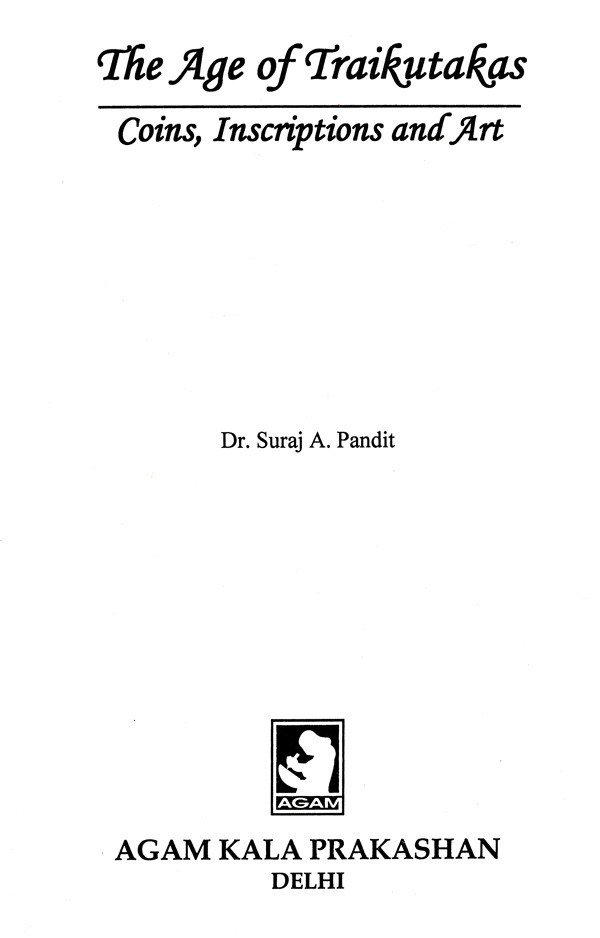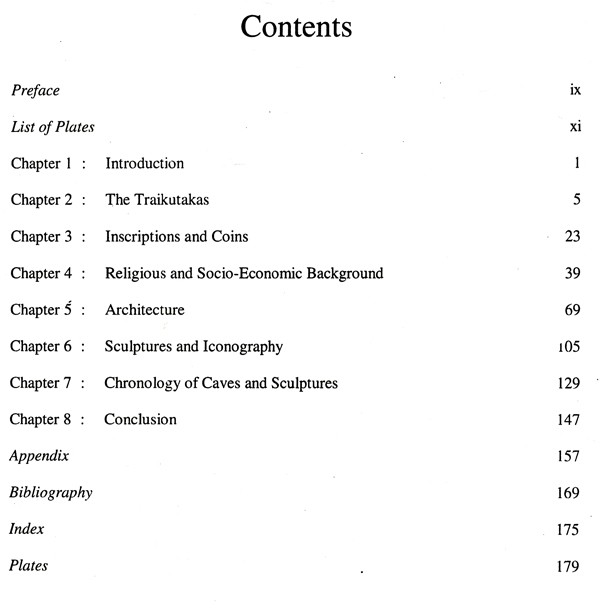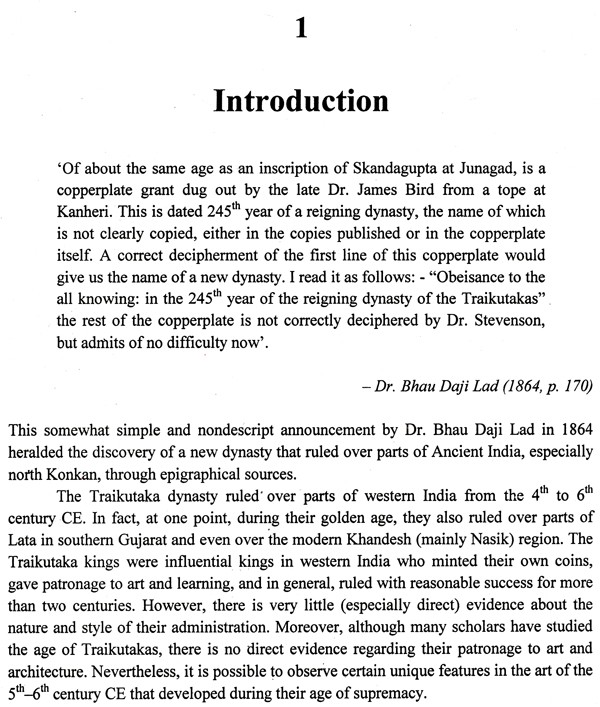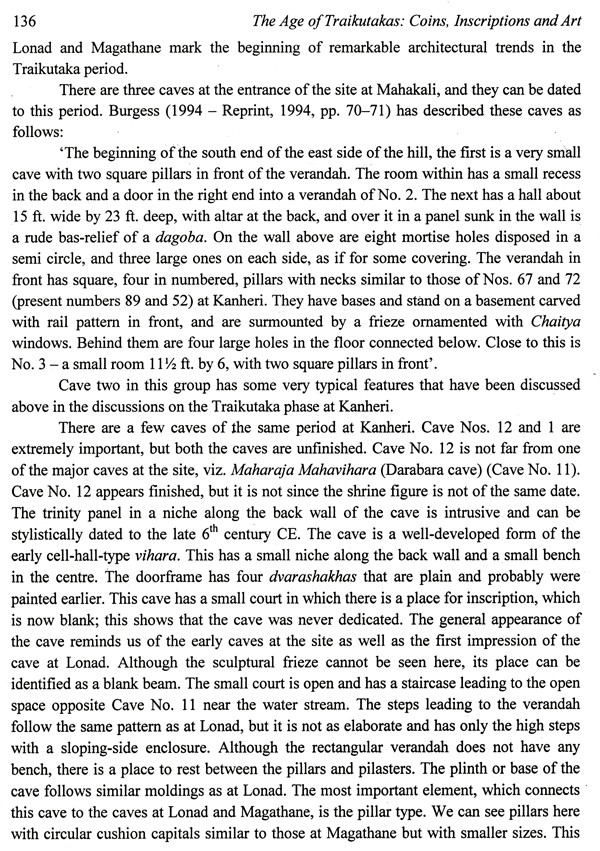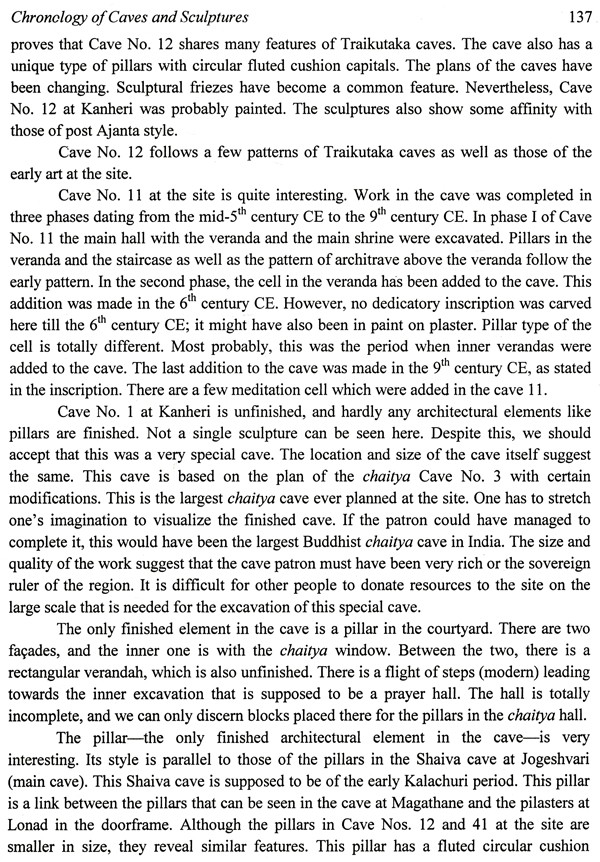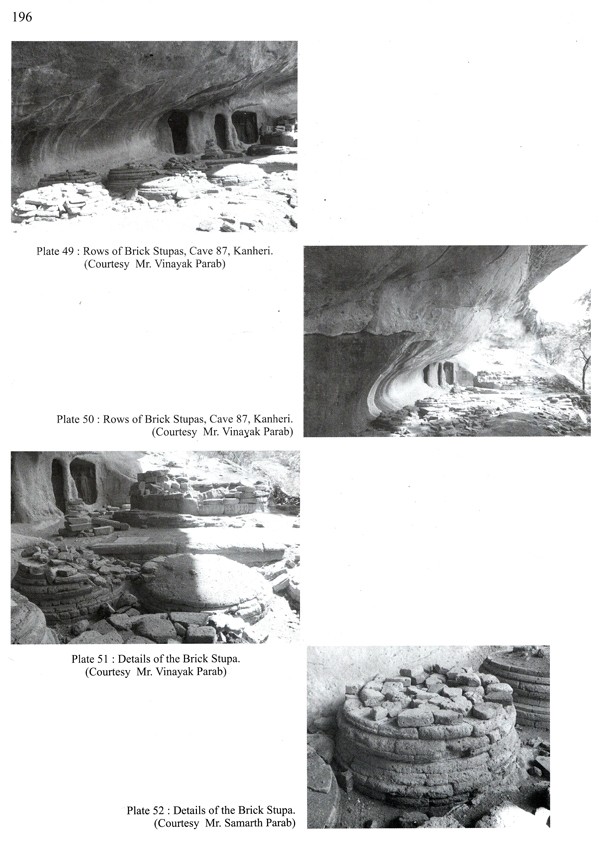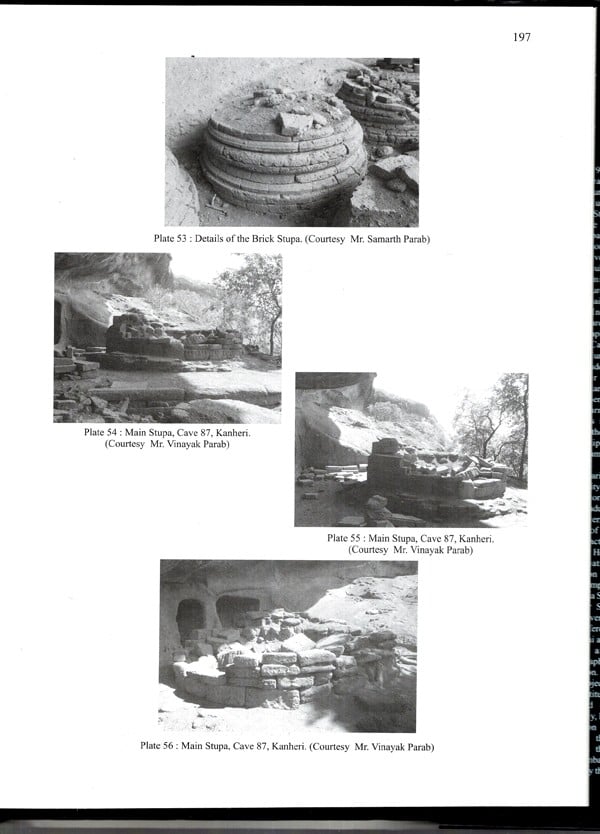
Age of Traikutakas- Coins, Inscriptions and Art
Book Specification
| Item Code: | AZH111 |
| Author: | Suraj A. Pandit |
| Publisher: | AGAM KALA PRAKASHAN, DELHI |
| Language: | ENGLISH |
| Edition: | 2012 |
| ISBN: | 9788173201158 |
| Pages: | 234 (Throughout Black and White Illustrations) |
| Cover: | HARDCOVER |
| Other Details | 11.00x9.00 inches |
| Weight | 1.15 kg |
Book Description
This book is an attempt to understand the contributions of the Traikutakas, a dynasty that ruled over North Konkan in the 5th6th century CE, by considering various types of data and art history related to them. This book primarily focuses on the artistic developments in this region during the reign of the Traikutakas and also details the motivational factors behind specific developments in art and architecture; further, there has been an attempt to assess their contributions to artistic developments and continuity in their position as the ruling dynasty of the region.
The first two chapters deal with the political career of the Traikutaka kings and the issues and problems related to their chronology. The third chapter deals with the 5 important copper plates of the 'Traikutaka Age' as well as the coinage issued by Traikutaka kings. Translations of two of these copperplates are published here for the first time. In the fourth chapter, the cultural background (5th and 6th century CE) is described using epigraphical, numismatic, and art historical data. An attempt has been made to understand art historical data by employing archaeological methods. The subsequent three chapters deal with Traikutaka architecture, sculptures & iconography, and their chronology. Finally, a brief review of the book with concluding remarks ends the book.
Dr. Suraj A. Pandit (March 22, 1977) is Assistant Professor and Head of Department, Ancient Indian Culture and Archaeology, Sathaye College, Mumbai. He is also Chairperson, Board of Studies in Ancient Indian Culture and Archaeology, University of Mumbai, and a member of the Academic Council, Faculty of Arts, Board of University Teaching and Research in the Faculty of Arts, Research and Recognition Committee in Ancient Indian Culture and Archaeology, University of Mumbai.
He has specialized in Indian Buddhism and Buddhist architecture and archaeology. Further, he has completed his doctoral thesis on 'Kanheri Caves,' which is a group of caves in Mumbai representing Western Indian Buddhist Rock-Cut Architecture, under the guidance of Prof. A. P. Jamkhedkar. He has published a total of 19 papers in international and national journals. Among his several achievements in a distinguished career, he received the K. T. Telang Research Fellowship in Indology, Asiatic Society of Mumbai, from 2006-07.
Why would anyone want to write a book on the Traikutakas, whose reign and influences were (relatively) short and limited especially when faced with scarce data and insufficient literature? If someone else had conceived or proposed such a book, I would have wondered the same.
It was in 2001 that I first seriously considered the Traikutakas as a potential subject for a book. I was doing my thesis on the Buddhist caves at Kanheri and working on a small project at the "American Institute of Indian Studies", which gave me an opportunity to work with Prof. M. A. Dhaky. In one of our discussions, he suggested that I write on the Traikutakas. But I was just a beginner then and not confident. Nevertheless, while working on my Ph D thesis, I began to simultaneously work on this topic; this was also inevitable since the Traikutakas had integral links with the Kanheri caves and I had to repeatedly deal with problems related to their dating and their "Eras". And so, as a side project, I kept collecting data related to the Traikutakas.
**Contents and Sample Pages**
